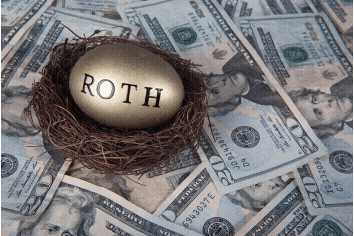By Eric Kinaitis
The ability to convert a traditional IRA to a Roth IRA account has been a topic of interest for many high income earners. The income cap that previously existed is no longer in place, allowing those who earn more than $100,000 in income to be able to make a conversion from a traditional IRA to a Roth.
No 10% early penalty withdrawal exists if the dollars move from the traditional IRA to Roth IRA within 60 days.
One of the biggest stumbling blocks in deciding to convert, however, is having to pay taxes on the converted amounts. The taxes paid ideally should come from other non-IRA assets.

Here is how the tax-free Roth conversion works. A client can establish a donor advised fund (DAF) as a companion to the converted Roth account and fund the DAF with cash or a variety of appreciated asset types. The income tax deduction on the DAF contribution tends to offset the increased tax liability resulting from the Roth conversion. In summary, the account holder realizes the full intended benefits of the converted Roth account and achieves the following tax benefits:
- Full fair market value (FMV) deduction on assets contributed to the donor advised fund.
- No capital gains tax on appreciated assets contributed to the DAF.
- The DAF deduction helps to offset federal taxes on the Roth conversion.
- There are no required minimum distributions from the Roth while the client is living and distributions are free of taxes.
- No estate taxes on assets in the donor advised fund; Roth assets are subject to estate taxes.
- Assets in the Roth and the DAF grow tax-free.
An account holder will want to use cash or a variety of appreciated assets that are outside of their traditional IRA or pay any taxes due on any converted amounts that exceed DAF contributions.
At American Endowment Foundation, financial advisors can continue to manage the assets of their clients within their clients’ donor advised fund at all levels and on their familiar custodial platform.
Summary
The key question on whether a Roth conversion makes sense or not is whether the tax rate being paid now will be higher or lower than what would be paid in retirement. In general, if tax rates will be higher in retirement, converting is the best move. With that in mind, a companion donor advised fund solution that is funded with non-IRA assets can mitigate the tax bite on the conversion.
Call us at 1-888-660-4508 or contact us to discuss the particulars of your client and their potential Roth conversion.
Note: The information provided herein is for informational purposes only and should not be interpreted to constitute legal and/or tax advice. Donors should consult their legal and tax advisors regarding their specific situations.